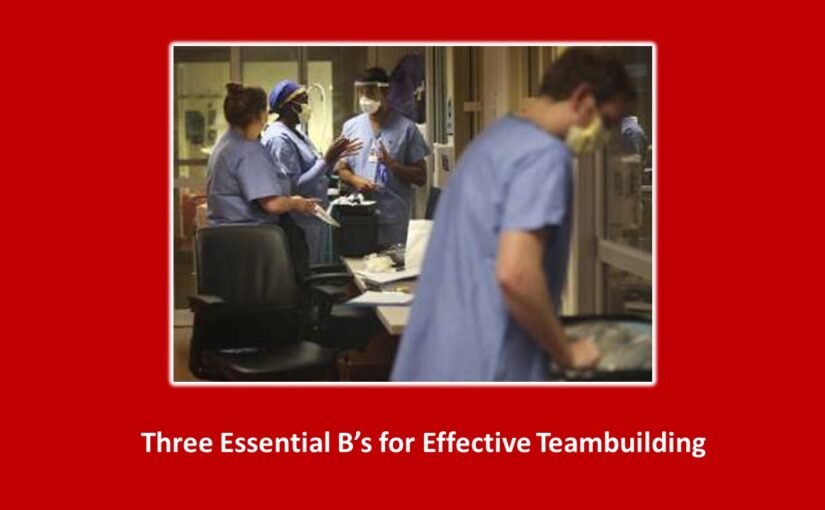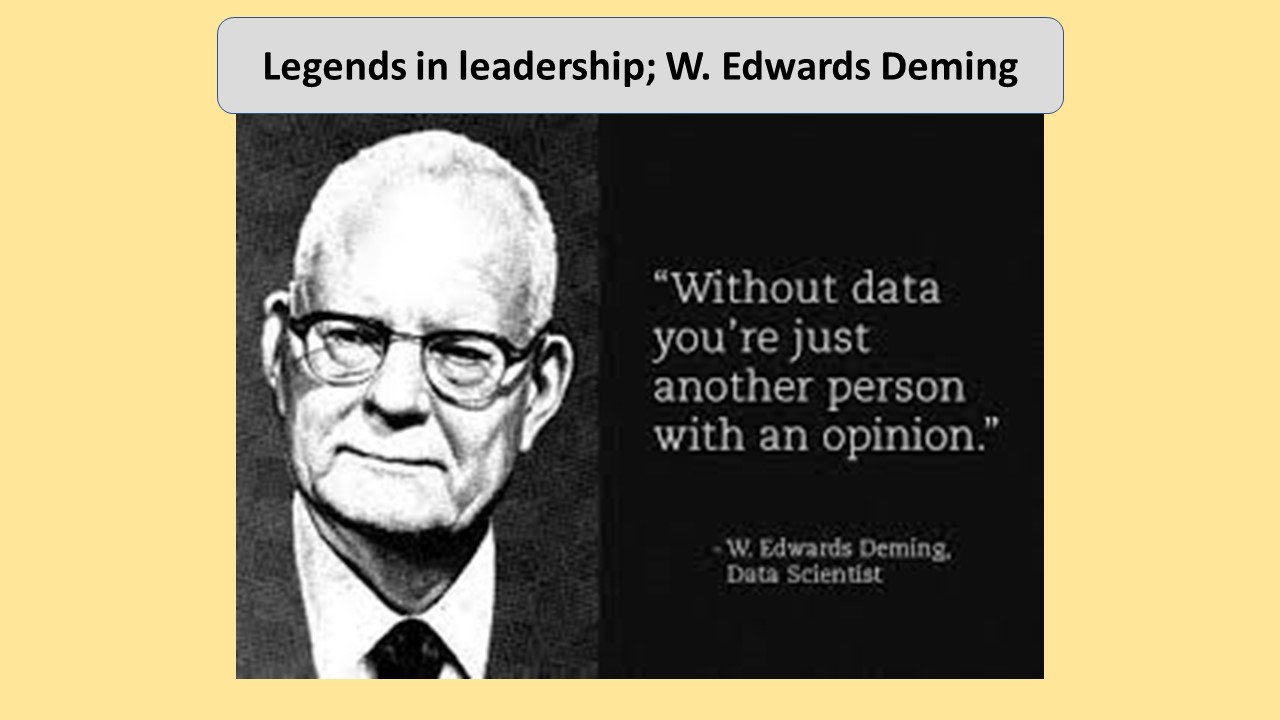By Thomas Davis, DNAP, MAE, CRNA
Follow @procrnatom on twitter
The role of boss is a daunting proposition that causes self-doubt in some but motivates other individuals to master the skills required for successful leadership. Your ability to manage the inevitable surprises that pop up frequently will determine your ultimate success, and with a little self-confidence and focus, you can do it. Finding those key behaviors necessary for inspiring a team to achieve greatness is like Harrison Ford seeking the holy grail in the 1989 Indiana Jones movie classic. And like the movie, becoming successful at leadership is a challenging journey that requires commitment and focus while navigating through a maze of complicated barriers. The holy grail for leadership does not exist; however, there are behaviors that, when mastered, will make you and your team champs. Forget about winning the leadership lottery or gaining overnight success; rather, spend time and attention to mastering the 3 B’s to improve your effectiveness as a leader.
“Your job as a leader is to stay as close in touch as possible with those closest to the action.”
~Kat Cole
Be present
To be a leader, you must have followers. The title you have as the designated boss gives you the authority to implement policy, but you cannot truly lead a team without its consent. Becoming the person whom the group wants to follow requires that you have an active presence with the team. Writing for Forbes magazine, author Carol Kinsey Gorman notes that it is not about how you perceive yourself; it is about how others perceive you. Having a presence with your team requires interaction daily and a special connection with each person. As you interact with your colleagues, here are a few behaviors that will help you to be present:
- Set the tone for your workgroup by showing up every day with a positive attitude. Your mindset and energy level are contagious and will be imitated by your team. Do a self-check, put a smile on your face and some pep in your step before welcoming your team to the workday.
- Personal relationships create a foundation for trust. Be as interested in the person doing the job as you are in accomplishing a task. You do not have to be best buddies but it is important that each employee know that he/she is unique and appreciated.
- Use body language to display confidence in yourself and your team. Stand straight, hold your head high, pull your shoulders back and put a pleasant look on your face. When you own your space, your team will feel as if you can protect theirs.
- Use the word “because” when making a request. It may sound trivial but when you simply tell people to do something, they feel micromanaged; however, when you tell them why it needs to be done, they feel privy to inside information, see that their work is important, and are more likely to willingly comply.
- People will not always remember what you say, but they will never forget how you make them feel.
Be empowering
Show me a workplace with extreme productivity and high morale and I’ll wager that employee empowerment is a part of the culture. Workers who perceive that they are empowered feel as if they are vital and that their effort supports the goals of both the team and the organization. In addition, empowerment creates a bond of trust between the worker, the boss, and the organization. Here are some steps that you can take to be an empowering boss:
- Clarify goals and guidelines. Having a goal creates a common purpose for your team and gives them something to collaboratively work toward. A former friend who was active in his church explained that adding a room to the church gave his parish a goal, united church members and injected energy into the group that had previously been lacking. Clearly communicate goals so that all oars are paddling in the same direction.
- Create opportunities for workers to take charge. Workers are empowered when they are given responsibility for a task and then given guidelines, resources, and the latitude to complete a task without the fear of micromanagement. By allowing a person to be responsible for an assignment or an entire project, you are saying, “I trust you,” and he/she will likely take ownership.
- Assign authority along with responsibility. There is nothing more demoralizing than to be given responsibility to complete a task without being given the authority to do what needs to be done. When assigning tasks and projects, make sure that the person has the resources and authority to bring the assignment to closure.
- Encourage communication. Healthy teams have open communication at all levels. When brainstorming, all voices must be welcome, and creativity must be rewarded. Equally, there is a place for small talk that promotes socialization in the workplace. Through casual conversation, workers create friendships that will pay dividends later when they work together on a project.
- Promote mentoring and coaching. Professional development is high on the list of characteristics in an empowered workplace. Coaching is a process to teach practical skills to new workers as they join the team or to experienced team members as technology changes. Mentoring can be a long-term partnership in which an experienced person shares knowledge and life experiences with a rising star on the team. Coaching can be a short-term interaction to teach a specific skill. Both coaching and mentoring send the message that you care about the worker and want him/her to reach their full potential.
- Encourage self-improvement. Anything that expands the knowledge or skills of a worker adds depth to what they can contribute to the team and supporting their effort shows that you care about their personal growth. A former colleague signed up for a Russian class at the local community college. The leader adjusted the schedule so that he could be out early every Wednesday to attend the class. Not only did the person learn a language, the mood of the entire team was lifted when they saw the support that was given to a colleague.
“A hero is an ordinary individual who finds the strength to persevere in spite of overwhelming obstacles”
~Christopher Reeve
Be resilient
Despite our best efforts, not everything can or will go smoothly and you must be resilient if the train is to be kept on the tracks. Resilience is the ability to meet adversity and then recover and restore business as usual. The healthcare workplace is constantly changing as are the personal needs of team members. Sometimes a head-on collision is inevitable and you, as the leader, may be part of the collateral damage. Setbacks can shake one’s self-confidence and create a sense of personal hopelessness. If left unchecked, your negative vibes will transfer to the team and kill its morale. Here are some behaviors that will help you to develop resilience.
- Learn from mistakes. Conflict seldom just happens; someone or something put the problem into motion, and it came to a head under your watch. Take ownership of the problem then step back and reflect on the flawed process that caused the event to occur. Creatively think of ways to avoid recurrence of the problem, develop a plan, and implement the needed change.
- Have positive self-talk. Your internal dialogue is a powerful tool that will empower you to solve the problem or will stifle your self-confidence and ensure your demise. A problem does not make you a poor leader or a bad person; it gives you an opportunity to resolve an issue. Remind yourself of your strengths, sources of support and your expectation that you are up to the task of implementing a solution. Use confident body language, assure yourself that you are highly qualified, and then fix the problem.
- Re-define your purpose or goal. When problems arise in the workplace, often it is because people have lost sight of the purpose of the organization and the team. Pause to reflect on your goals and question whether they have changed. If so, update them to reflect the current reality. If not, the team must be brought back into alignment with the goals. Regardless of the source of the glitch, decisively communicate targets and expectations to the team.
- Be a champion for the cause. Show your resilience by becoming the person to champion the changes necessary to ensure that the problem does not emerge again. Determine a desired outcome and focus your activity on achieving it. Use your energy and position to create grassroots support among team members and solicit their help as you move forward.
- Be a realist. Avoid giving a knee-jerk, fix it now response to a situation. Rather than coming in with guns blazing, first visualize a best-case scenario for resolving the issue and then temper the vision by assessing resources. An OK plan that can be quickly implemented is better than an idealistic plan that is unrealistic and doomed for failure.
Leading a healthcare team presents challenges that are quite different from those experienced by Indiana Jones; however, like the archeologist, the three B’s will help you navigate the traps that would defeat a lesser person. Being present gives you visibility and enables communication that will bond your team into a collaborative unit. Being empowering ensures that creativity is tapped and that the team works toward a positive goal rather than being paralyzed by the fear of making a mistake. Being resilient enables you to climb out of the pit, regain your composure and continue your quest to find the holy grail. Use the three B’s to be all you can be.
Tom is an experienced leader, author, and requested speaker. Click here for a video introduction to Tom’s talk topics.


